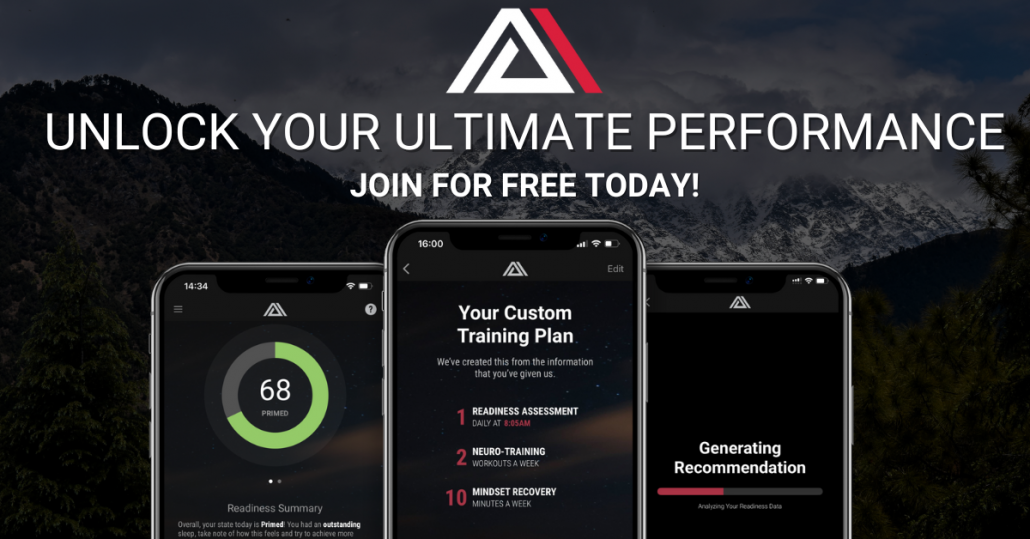Mental Preparation for Athletes: 5 Methods to Boost Your Performance
Mental preparation is often overlooked — but knowing how to get in the right headspace before competition is key to accomplishing your absolute best. It can mean the difference between winning and losing, promotion and relegation, or even your spot on the team.
Without adequate preparation, you might find yourself scattered, unable to focus, and not performing your best.
One of the best ways to prepare for a big game or tournament is to create a mental preparation routine. Your routine can be as detailed or as minimal as you’d like — it’s all about finding what works best for you.
So, with this in mind, this blog post will explain what mental preparation for athletes is and how you can use it to improve your performance when it matters most.
Key takeaways:
- Develop a pre-game mental preparation routine
- Learn how to separate personal life from sport
- Use Rewire to improve your mental preparation
How to mentally prepare for competition
If you’re an athlete, you’ve probably competed (or at least went to training) when you were not in the right headspace. You might have found it difficult to focus, and simple tasks that you usually find easy become hard and frustrating. And all of that is made worse because you know you’re capable, but your mind has other ideas. Not fun!
Many athletes choose to add a pregame mental preparation routine right before the competition. It allows them to consciously remove distractions and increase their focus. It’s like flicking a switch in your brain and letting it know that “It’s go time.”
And while the routines of Elite athletes are different between sports, they often share a lot of overlap. For example, a lot of athletes listen to music to psych themselves up, practice mindfulness or meditation, and perform visualization exercises. And these are just a few mental preparation techniques you can try!
Keep reading to find out more techniques — and how you can implement them into your pre-game routine to increase your focus and improve your performance.

1. Practice mindfulness
Mindfulness is about removing distractions and focusing on the present moment. In sports, that means leaving your worries and anxieties in the locker room. You need to run onto the field with a clear head, armed with the right goals and limited distractions.
Focusing on the wrong thoughts drains energy and distracts you from your game. Your problems will be there once you’re finished! But hopefully, after a win or a successful performance.
So how do you practice mindfulness?
There are numerous ways you can add mindfulness to your mental preparation. For example, you could perform a guided meditation or deep breathing session. Or, if you prefer something more productive, you could do light stretching with the goal of narrowing your focus and clearing your mind.
Find what works best for you, and stick with it! Familiarity is a key part of pre-performance routines.
2. Visualize your performance
Visualization is a very powerful tool for athletes. It’s used by the best of the best, and for good reason. However, how do you use it before competition? There is no right or wrong answer. You may choose to think through and envision your strategy, your technique, or how you think the game will play out.
You can focus on one specific thing, such as defending against an individual opponent, or you can visualize the competition as a whole and how you want it to play out. Practice a mix of techniques, and find what works best for you.
Practice the mental visualization skill in training before competition. Very quickly, you’ll see how powerful it can be!

3. Practice positive self-talk
Often, many athletes unfamiliar with self-talk assume they have to talk to themselves out loud. And while some athletes do this, it’s not necessary. If it works for you, then cool! But if not, don’t worry.
You can also speak affirmations, cues, and mantras in your head. Besides, it’s more about thinking than speaking! But self-talk is powerful and can replace negative thoughts, e.g. “I can’t make this shot” vs. “I will make this shot.” It’s about retraining your mind and hitting the restart button to increase confidence and focus when you need it.
4. Understand that not all stress is bad
Too much stress can be devastating — working against you rather than for/with you. However, a small and controlled amount of stress can help energize your performance. It can give you that much-needed rush of adrenaline and surge of confidence in the closing minutes of a game or the final few 100m of a race.
And while it can be useful, you must learn how to control and manage it. If you compete with too much stress, then this can cause anxiety or too high of arousal. And guess what happens? Your performance suffers because of it.
Recognize that not all stress is bad — but learn how to control it. Add some type of de-stressing activity to your routine, especially if you feel highly anxious, stressed, and worried.

5. Use Rewire to prepare and prime your mind for competition
Finally, you can use Rewire to prime your mind and body for competition. Rewire uses evidence-based protocols from sports psychology to improve your mindset, reduce stress levels, and improve your mental resilience.
There are also visualization exercises — and other tools — to help you best prepare for competition. Whether you like to listen to binaural beats, perform reaction tests, or guided meditation, there is definitely something for you.
“I have been using the app for a few months. It has helped me set the proper mindset before workouts, disconnect before bedtime, and gauge my mental readiness on a daily basis.” – Matt Hanson (Professional Triathlete and Coach)
Find out more about Rewire for Athletes.












